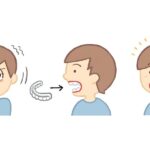Motion sickness is a common condition that occurs when the brain receives conflicting signals from the eyes, inner ear, and other sensory systems. It is often triggered by movement, whether it is the motion of a car, boat, plane, or even while using virtual reality technology. While it can affect anyone, certain individuals are more prone to experiencing motion sickness. This condition can cause a variety of symptoms ranging from mild discomfort to severe nausea and vomiting, significantly impacting the quality of life for those affected.

What is Motion Sickness?
Motion sickness, also known as kinetosis, occurs when there is a discrepancy between the movement detected by the inner ear (which is responsible for balance) and the visual information processed by the eyes. When these two signals do not match, the brain receives confusing information, leading to symptoms of dizziness, nausea, and discomfort. Motion sickness is commonly associated with travel, especially during activities such as car rides, boat trips, airplane flights, and even amusement park rides.
Types of Motion Sickness
Motion sickness can be triggered by various types of movement, and the severity of the condition can vary depending on the individual. Some common types include:
- Car Sickness: This is one of the most common forms of motion sickness, typically experienced during long car trips or while reading or using a mobile device in a moving vehicle.
- Sea Sickness: Often experienced by individuals traveling on boats, ships, or ferries, sea sickness is caused by the motion of the water. The sensation of the boat rocking back and forth can overwhelm the inner ear and trigger symptoms of nausea and dizziness.
- Air Sickness: Air sickness occurs during airplane travel, especially during turbulence or when the plane experiences significant changes in altitude. The rapid movement of the aircraft can lead to conflicting signals between the inner ear and eyes.
- Space Motion Sickness: Astronauts are not immune to motion sickness. In a zero-gravity environment, the lack of traditional visual cues and the feeling of floating can cause disorientation and nausea.
- Virtual Reality Sickness: With the rise of virtual reality technology, many individuals experience symptoms similar to motion sickness when using VR devices. The disconnect between the real-world environment and the virtual experience can cause nausea and dizziness.
Causes of Motion Sickness
The primary cause of motion sickness is the conflict between the sensory signals sent to the brain. The inner ear, which is responsible for detecting motion and maintaining balance, sends signals to the brain that are not in harmony with the visual information received by the eyes. This mismatch leads the brain to interpret the conflicting signals as a potential threat, triggering a cascade of physical responses, including nausea and dizziness.
Factors Contributing to Motion Sickness
Several factors can increase the likelihood of experiencing motion sickness, including:
- Type of Movement: The type of motion, such as rocking, swinging, or spinning, can impact how severe the symptoms are. For example, the unpredictable motion of a boat on the water can be more disorienting than the steady motion of a car on the road.
- Individual Sensitivity: Some people are more prone to motion sickness due to their sensitivity to motion. This may be due to a heightened response in the vestibular system (the part of the inner ear responsible for balance).
- Age: Motion sickness is more common in children, particularly those between the ages of 2 and 12. It tends to decrease with age as the brain becomes more adept at processing conflicting sensory information.
- Genetics: Some individuals are genetically predisposed to experience motion sickness. Those with a family history of the condition may be more likely to develop symptoms.
- Hormonal Changes: Hormonal fluctuations, such as those experienced during pregnancy, can increase the likelihood of motion sickness. Pregnant women may experience heightened sensitivity to motion due to changes in their inner ear and balance system.
- Stress and Anxiety: Stress and anxiety can exacerbate the symptoms of motion sickness. Individuals who are nervous or anxious about traveling or being in motion may be more prone to experiencing nausea and dizziness.
Symptoms of Motion Sickness
The symptoms of motion sickness can vary from person to person, but common signs include:
- Nausea: The most common symptom of motion sickness, nausea is often accompanied by a queasy feeling in the stomach and a strong urge to vomit.
- Dizziness: A feeling of lightheadedness or spinning may occur as the brain struggles to reconcile conflicting signals from the eyes and inner ear.
- Cold Sweats: Individuals may experience clammy, cold sweats as a physical response to nausea and discomfort.
- Paleness: The skin may become pale or flushed due to the body’s response to the discomfort.
- Fatigue: Motion sickness can leave individuals feeling exhausted, often because the body is using a great deal of energy to combat the discomfort.
- Headache: A mild to moderate headache is common, especially in those who experience prolonged motion sickness.
Treatment Options for Motion Sickness
While motion sickness can be distressing, several treatment options are available to manage and alleviate symptoms. The treatment approach may depend on the severity of the condition and the individual’s needs.
1. Over-the-Counter Medications
For those who experience occasional motion sickness, over-the-counter medications may provide relief. These medications work by blocking the signals that cause nausea and dizziness. Some commonly used drugs include:
- Dimenhydrinate (Dramamine): A popular antihistamine that reduces symptoms of motion sickness by blocking histamine receptors in the brain.
- Meclizine (Bonine, Antivert): Another antihistamine that is often used to prevent motion sickness and alleviate nausea.
- Diphenhydramine (Benadryl): While primarily used as an allergy medication, diphenhydramine can also help with the nausea and dizziness associated with motion sickness.
2. Prescription Medications
For individuals with chronic or severe motion sickness, prescription medications may be necessary. These may include stronger antihistamines, scopolamine patches, or other anti-nausea drugs. Scopolamine is commonly prescribed in the form of a patch that is worn behind the ear to prevent symptoms of motion sickness.
3. Ginger Supplements
Ginger has long been used as a natural remedy for nausea and motion sickness. Studies suggest that ginger may help alleviate symptoms by soothing the stomach and reducing nausea. Ginger can be taken in various forms, including ginger tea, capsules, or candied ginger.
4. Acupressure Bands
Acupressure bands are designed to apply gentle pressure to specific points on the wrist, which may help relieve nausea associated with motion sickness. These bands are often worn during travel and can be effective for mild cases.
5. Behavioral Techniques
Certain behavioral strategies can help reduce the likelihood of motion sickness:
- Looking at the Horizon: Focusing on a stable object in the distance, such as the horizon, can help synchronize the conflicting signals from the eyes and inner ear.
- Choosing the Right Seat: Sitting in a position where motion is less pronounced can also help. For example, sitting in the front seat of a car, near the wings of an airplane, or in the middle of a boat may reduce the severity of symptoms.
6. Environmental Adjustments
Making adjustments to the environment can help reduce the risk of motion sickness:
- Ventilation: Ensuring good airflow in a moving vehicle can help prevent nausea. Open windows, air conditioning, or fans can be beneficial.
- Avoiding Strong Odors: Strong smells, such as food, perfume, or exhaust fumes, can worsen symptoms of motion sickness. Avoiding these odors may help reduce discomfort.
Prevention of Motion Sickness
Preventing motion sickness is often more effective than treating it once symptoms have occurred. Several strategies can be employed to reduce the risk of experiencing motion sickness:
- Gradual Exposure: Gradually acclimating to motion can help the body adjust and reduce the risk of motion sickness. For example, spending short periods on a boat or in a car can help desensitize the body to motion.
- Eating Lightly: Avoiding heavy or greasy meals before traveling can help prevent nausea. Eating small, frequent meals may be beneficial for individuals prone to motion sickness.
- Staying Hydrated: Dehydration can exacerbate symptoms of motion sickness. Drinking plenty of water before and during travel can help keep symptoms at bay.
Motion sickness is a common condition that can affect anyone, but with the right treatment and preventive measures, its impact can be minimized. Whether it’s car sickness, sea sickness, or air sickness, understanding the causes and symptoms of motion sickness, along with implementing appropriate treatments, can help individuals travel comfortably and with confidence.

